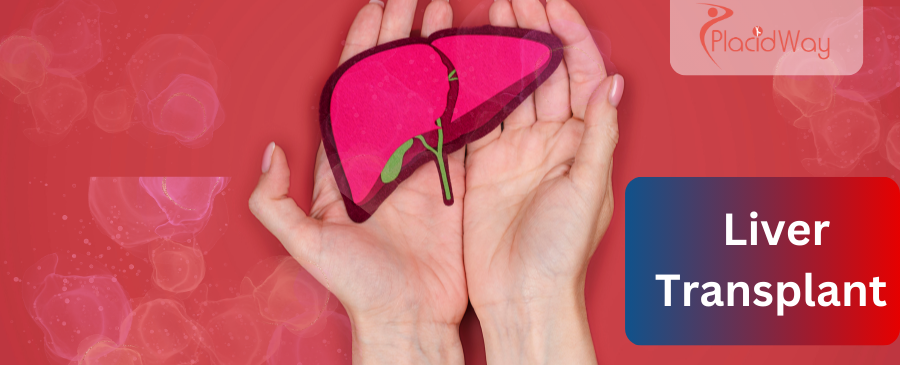
A Second Chance at Life: Understanding Liver Transplants and Global Treatment Options
Facing end-stage liver disease can feel overwhelming, a journey marked by declining health and the uncertainty of a viable future. For many, a liver transplant isn't just a medical procedure; it's the ultimate hope for a renewed life, a fresh start. The liver, often called the body's "super factory," performs over 500 vital functions, from detoxifying blood to producing essential proteins and aiding digestion. When this powerhouse organ fails, life itself is at stake.
A liver transplant involves surgically removing a diseased or damaged liver and replacing it with a healthy liver, either from a deceased donor or a portion of a liver from a living donor. This complex, life-changing surgery is reserved for individuals whose liver disease has progressed to a point where it is life-threatening and irreversible by other medical therapies.
Globally, thousands of people are on waiting lists for a liver transplant, driven by various chronic conditions. While the procedure offers immense hope, the high costs and lengthy waiting times in many Western countries often lead patients to explore international options. This guide will delve into everything you need to know about liver transplants, including what to expect, who qualifies, and why medical tourism is becoming a vital pathway for patients seeking affordable, high-quality care abroad.
What Are the Symptoms of Liver Disease That May Require a Transplant?
Recognizing the signs of advanced liver disease is crucial. Early symptoms can be subtle, but as the liver deteriorates, more severe and noticeable indicators emerge. If you're wondering "what are the signs of liver failure?" or "when does liver damage become severe enough for a transplant?", here are key symptoms to be aware of:
- Jaundice: A yellowish discoloration of the skin and whites of the eyes, caused by the buildup of bilirubin (a waste product). This is a hallmark sign of significant liver dysfunction.
- Persistent Fatigue: Unrelenting tiredness and weakness that doesn't improve with rest, often due to the liver's inability to process toxins and produce energy efficiently.
- Abdominal Swelling (Ascites): Fluid accumulation in the abdomen, causing discomfort and distension, a common complication of severe liver disease.
- Leg and Ankle Swelling (Edema): Similar to ascites, fluid retention can also affect the lower limbs.
- Easy Bruising or Bleeding: The liver produces clotting factors, so its impairment can lead to frequent bruising, nosebleeds, or prolonged bleeding from minor cuts.
- Confusion and Cognitive Changes (Hepatic Encephalopathy): Toxins normally cleared by the liver accumulate in the bloodstream and affect brain function, leading to memory problems, disorientation, difficulty concentrating, and even personality changes.
- Nausea, Vomiting, and Loss of Appetite: General digestive distress and an aversion to food, leading to unintended weight loss.
- Dark Urine and Pale Stools: Changes in waste product excretion due to impaired bile flow.
- Itchy Skin (Pruritus): Severe itching, often worse at night, caused by bile salt buildup under the skin.
If you or a loved one are experiencing these symptoms, it's vital to seek medical evaluation immediately. These signs suggest that the liver's ability to perform its life-sustaining functions is severely compromised, potentially leading to questions like "when do you need a new liver?" or "how bad does liver disease get before transplant?"
What Causes Liver Failure and Who is at Risk?
Understanding the "causes of end-stage liver disease" is key to prevention and treatment. Liver failure, necessitating a transplant, typically results from chronic conditions that gradually damage the liver over many years. Here are the primary culprits and who is most at risk:
- Chronic Viral Hepatitis (Hepatitis B and C): These viral infections are leading causes of chronic liver inflammation, which can progress to cirrhosis and liver cancer. Individuals exposed to infected blood or bodily fluids are at risk.
- Alcoholic Liver Disease: Prolonged, excessive alcohol consumption is a major cause of liver damage, leading to fatty liver, alcoholic hepatitis, and eventually cirrhosis. Heavy drinkers are highly susceptible.
- Non-Alcoholic Fatty Liver Disease (NAFLD) and Non-Alcoholic Steatohepatitis (NASH): These conditions, increasingly common, are linked to obesity, type 2 diabetes, high cholesterol, and metabolic syndrome. NASH, a more severe form, can cause inflammation and scarring, leading to cirrhosis.
- Autoimmune Hepatitis: A condition where the body's immune system mistakenly attacks liver cells, causing inflammation and damage.
- Genetic Disorders:
- Hemochromatosis: Too much iron accumulates in the body, damaging the liver.
- Wilson's Disease: Excessive copper buildup in the liver and other organs.
- Alpha-1 Antitrypsin Deficiency: A genetic defect that can lead to liver and lung disease.
- Bile Duct Diseases: Conditions like primary biliary cholangitis (PBC) and primary sclerosing cholangitis (PSC) damage and block the bile ducts, leading to bile buildup and liver damage.
- Acute Liver Failure: Though less common, acute liver failure can occur suddenly due to drug-induced injury (e.g., acetaminophen overdose), certain viral infections, or autoimmune attacks.
Patients with long-standing histories of these conditions are often asking "what leads to liver transplant?" and are at the highest risk of requiring a transplant when their liver function can no longer sustain life.
What Are the Different Types of Liver Transplant Procedures?
Understanding the "types of liver transplant surgery" is important for patients and their families. There are primarily two main types of liver transplant procedures, each with its own set of considerations:
- Deceased Donor Liver Transplant:
This is the most common type of liver transplant. It involves receiving a whole, healthy liver from an organ donor who has recently died (typically from a severe head injury or brain death) and whose family has consented to organ donation. The donor liver is carefully matched for blood type and body size with the recipient. Waiting lists for deceased donor organs can be long, often extending for months or even years, depending on the patient's medical urgency (MELD score) and geographic location.
- Living Donor Liver Transplant (LDLT):
In this procedure, a portion of a healthy liver is surgically removed from a living donor and transplanted into the recipient. The liver is remarkable because it can regenerate, meaning both the donor's remaining liver and the transplanted segment in the recipient will grow back to nearly full size within a few months. LDLT offers several advantages:
- Reduced Waiting Time: It bypasses the long waiting list for deceased donor organs.
- Scheduled Surgery: The procedure can be planned, allowing for better preparation for both donor and recipient.
- Better Organ Quality: The transplanted liver segment is typically healthier and exposed to less ischemia (lack of blood flow) time.
Living donors are typically close relatives or friends, usually between 18-60 years old, in excellent health, and with a compatible blood type. Both the donor and recipient undergo extensive evaluation to ensure safety and suitability.
- Split Liver Transplant (a type of deceased donor transplant):
Sometimes, a deceased donor's liver is divided into two parts (a larger right lobe and a smaller left lobe), which can then be transplanted into two different recipients – typically an adult and a child. This maximizes the use of a single donor organ, effectively saving two lives.
The choice between these options often depends on donor availability, the recipient's medical condition, and the expertise available at the transplant center. Many patients searching for "living donor liver transplant success rate" or "deceased donor liver transplant options" are weighing these critical factors.
Who is Eligible for a Liver Transplant and What Are the Criteria?
The question "who is a candidate for liver transplant?" involves a rigorous evaluation process. A liver transplant is a major surgery with significant risks, so candidates must meet strict criteria to ensure the best possible outcome. Key eligibility "liver transplant criteria" include:
- End-Stage Liver Disease (ESLD): The primary requirement is irreversible liver disease that is life-threatening and cannot be managed by other medical or surgical treatments. The severity is often measured by scores like MELD (Model for End-Stage Liver Disease).
- No Other Treatment Options: All other medical therapies and interventions must have failed or are deemed unlikely to succeed.
- Overall Health: Candidates must be healthy enough to undergo major surgery and tolerate the recovery period. This involves a comprehensive evaluation of heart, lung, kidney, and other organ systems.
- Absence of Severe Co-morbidities: Conditions that would significantly increase the risk of surgery or reduce the chances of long-term survival are typically disqualifying. These might include severe heart or lung disease, uncontrolled infections, active substance abuse (alcohol or illicit drugs), or active cancer outside the liver.
- Psychological Stability and Support System: Patients must have a stable mental and emotional state and a strong support system to cope with the challenges of transplant surgery and lifelong adherence to medication and follow-up care.
- Commitment to Lifelong Care: Post-transplant, patients need to take immunosuppressant medications for the rest of their lives and attend regular medical appointments. A candidate must demonstrate the ability and willingness to comply with this demanding regimen.
- No Active Infection: Active, untreatable infections are a contraindication due to the high risk of complications with immunosuppression.
The evaluation process is extensive, involving multiple specialists who determine if the potential benefits of a transplant outweigh the risks. This is critical for patients asking "can anyone get a liver transplant?" or "what are the requirements for a new liver?"
What is the Recovery Time and What Can I Expect After a Liver Transplant?
Understanding "life after liver transplant recovery" is crucial for managing expectations. The recovery process after a liver transplant is a marathon, not a sprint, requiring patience and dedication:
- Immediate Post-Operative Period (Hospital Stay):
- Typically 2-4 weeks in the hospital, often starting in the intensive care unit (ICU) for a few days.
- Close monitoring for signs of rejection, infection, and other complications.
- Pain management, breathing exercises, and early mobilization (walking) begin quickly.
- Introduction to immunosuppressant medications to prevent organ rejection.
- Early Home Recovery (First 3-6 Months):
- Requires significant support from family or caregivers.
- Frequent follow-up appointments with the transplant team, blood tests, and imaging scans.
- Adherence to a strict medication schedule is paramount.
- Gradual increase in physical activity, but heavy lifting and strenuous activities are restricted.
- Dietary adjustments and infection prevention measures are vital.
- Long-Term Recovery (Up to 1 Year and Beyond):
- Most patients can return to work and normal activities within 6-12 months.
- Lifelong immunosuppressant medications are necessary.
- Regular check-ups will continue, though less frequently.
- Focus on a healthy lifestyle: balanced diet, regular exercise, avoiding alcohol and smoking.
- Emotional and psychological support is important for adjustment to a new life.
The "liver transplant recovery timeline" varies for each individual, but commitment to the post-transplant regimen is the strongest predictor of long-term success. Patients often ask "what is life like after a liver transplant?" and the answer is typically a significant improvement in health and quality of life, albeit with ongoing medical management.
What Are the Risks and Potential Side Effects of a Liver Transplant?
Like any major surgical procedure, a liver transplant comes with inherent "risks of liver transplant surgery" and potential side effects. While surgical techniques and post-operative care have advanced significantly, it’s important to be aware of these challenges:
- Organ Rejection: The most significant risk. The recipient's immune system may identify the new liver as foreign and try to attack it. Immunosuppressant medications are given lifelong to prevent this, but rejection can still occur.
- Infection: Due to immunosuppressant medications weakening the immune system, transplant recipients are at a higher risk of bacterial, viral, and fungal infections.
- Surgical Complications:
- Bleeding: During or after surgery.
- Blood Clots: In the blood vessels connected to the new liver.
- Bile Duct Complications: Leaks or narrowing of the bile ducts can require further procedures.
- Primary Non-Function: In rare cases, the new liver may not function at all.
- Graft Failure: The new liver fails to work adequately.
- Side Effects of Immunosuppressant Medications: These powerful drugs, essential for preventing rejection, can cause various side effects, including:
- Kidney problems or failure
- High blood pressure
- Diabetes (new onset or worsening existing diabetes)
- High cholesterol
- Bone thinning (osteoporosis)
- Increased risk of certain cancers (especially skin cancer and post-transplant lymphoproliferative disorder - PTLD)
- Mood swings, anxiety, tremors
- Weight gain
- Increased hair growth or hair loss
- Recurrence of Original Disease: In some cases, the original liver disease (e.g., Hepatitis C, certain cancers) can recur in the transplanted liver.
Patients often wonder "is liver transplant safe?" The answer is that while risks exist, careful monitoring and adherence to medical advice significantly improve safety and outcomes. The transplant team continuously balances the benefits of preventing rejection against the side effects of medications.
How Does Liver Transplant Cost Compare Worldwide?
One of the most pressing concerns for patients and families is "how much does a liver transplant cost?" The financial burden of a liver transplant can be staggering, particularly in countries with high healthcare costs. This disparity is a primary driver for medical tourism. The "liver transplant cost abroad" can offer significant savings without compromising quality.
Here's a general comparison of "worldwide liver transplant costs" (estimates can vary widely based on hospital, surgeon, complications, and pre/post-operative care requirements):
| Country | Estimated Cost (USD) | Notes |
|---|---|---|
| USA | $500,000 - $1,000,000+ | Highest costs, often covered by insurance but high deductibles/out-of-pocket. |
| UK | $250,000 - $500,000+ (for private patients) | Through NHS, but long wait times for non-residents or private options are costly. |
| India | $100,000 - $150,000 | Leading medical tourism destination, excellent infrastructure, high success rates. |
| Turkey | $100,000 - $180,000 | Competitive pricing, modern hospitals, experienced surgeons. |
| South Korea | $150,000 - $250,000 | Advanced technology, high-quality care, but slightly higher costs than India/Turkey. |
| Singapore | $200,000 - $350,000 | Premium care, world-class facilities, higher end of the medical tourism spectrum. |
These figures often include the surgery, hospital stay, pre-operative tests, and initial post-operative follow-ups, but typically exclude flights, accommodation for an extended stay, and long-term medication costs.
Why Consider a Liver Transplant Abroad for Better Value and Access?
For many, the idea of "liver transplant medical tourism" isn't a luxury, but a necessity. The decision to seek a liver transplant abroad is often driven by several compelling factors:
- Significant Cost Savings: As seen in the cost comparison, the price difference can be life-altering. For those without adequate insurance or facing prohibitive out-of-pocket expenses, going abroad makes a life-saving procedure financially feasible.
- Shorter Waiting Times: In some countries, particularly for living donor transplants, waiting lists can be considerably shorter than in Western nations. This can be critical for patients whose condition is rapidly deteriorating.
- Access to Specialized Expertise: Many medical tourism destinations have developed centers of excellence with highly experienced transplant surgeons and teams who perform a high volume of these complex procedures. They often boast cutting-edge technology and innovative approaches.
- Privacy and Anonymity: Some patients prefer the anonymity and privacy offered by receiving treatment away from their home country.
- Comprehensive Packages: Many international hospitals and medical tourism facilitators offer all-inclusive packages that cover not just the medical procedure but also accommodation, translation services, and local transportation, simplifying the logistics for international patients.
For patients searching "medical tourism liver transplant India" or "best country for liver transplant," these benefits represent hope and a viable path forward.
Which Countries Offer the Best Value and Expertise for Liver Transplants?
When searching for "where to get a liver transplant abroad" or "top liver transplant hospitals international," several countries consistently stand out:
- India: A global leader in medical tourism, especially for complex procedures like liver transplants. India boasts numerous JCI-accredited hospitals with state-of-the-art infrastructure, highly skilled surgeons, and dedicated transplant units. The "liver transplant success rate in India" is comparable to Western standards, with significantly lower costs.
- Turkey: Emerging as a strong contender, Turkey offers modern hospitals equipped with advanced technology and highly trained medical professionals, many of whom are Western-educated. Istanbul, in particular, is a hub for medical tourism.
- South Korea: Known for its cutting-edge medical technology and innovative surgical techniques, South Korea offers world-class care, particularly in living donor liver transplants. While costs are a bit higher than India or Turkey, the quality is exceptional.
- Singapore: A premium medical tourism destination, Singapore offers unparalleled medical standards, highly skilled specialists, and sophisticated facilities. It's an excellent choice for those prioritizing top-tier quality, even if the cost is on the higher end of the medical tourism spectrum.
These countries not only provide cost advantages but also prioritize patient care, offering services tailored to international patients, including language support and personalized care coordination.
What Should I Expect When Traveling for a Liver Transplant Abroad?
Traveling for a "liver transplant abroad" involves more than just booking a flight. It requires meticulous planning and preparation:
- Initial Consultation and Medical Record Review: You'll typically submit your medical records (test results, diagnoses, previous treatments) to several international hospitals for evaluation and to determine your eligibility.
- Visa and Travel Arrangements: Depending on the country, you'll need to secure a medical visa, which may require letters from the hospital. Flight bookings for both the patient and accompanying caregivers are essential.
- Extended Stay Accommodation: You will need to plan for an extended stay, often several months, as pre-operative assessments, the surgery itself, and initial recovery require considerable time in the destination country. Research apartments or extended-stay hotels near the hospital.
- Financial Planning: Ensure all financial aspects are clear, including payment schedules, what's included in the package, and emergency funds.
- Language and Cultural Differences: While many medical staff speak English, using a medical tourism facilitator can help bridge communication gaps and cultural nuances.
- Post-Operative Follow-up: Understand the plan for post-operative care once you return home. Some hospitals offer teleconsultations, but you'll need to coordinate with your local doctors.
- Emotional Support: Traveling for such a life-altering procedure requires a strong emotional support system. Bring a trusted companion, if possible.
A reputable medical tourism platform like PlacidWay can streamline this entire process, assisting with hospital selection, appointments, travel logistics, and even accommodation, ensuring a smoother journey for your "travel for liver transplant" plans.
How Can I Ensure Safety and Quality for My Liver Transplant Abroad?
The paramount concern for anyone seeking a "liver transplant abroad" is ensuring safety and high-quality care. Here's how to safeguard your journey:
- Choose Internationally Accredited Hospitals: Look for hospitals with international accreditations like Joint Commission International (JCI). This signifies that the hospital meets rigorous international standards for patient safety and quality of care.
- Verify Surgeon Credentials and Experience: Research the transplant surgeon's background, including their training, certifications, number of liver transplants performed, and success rates. Don't hesitate to ask for their CV.
- Review Patient Testimonials and Success Stories: Seek out reviews and testimonials from other international patients who have undergone liver transplants at the facility you are considering. This provides real-world insight into their experiences.
- Understand the Medical Team: A successful transplant relies on a multidisciplinary team. Inquire about the experience of the entire team, including anesthesiologists, hepatologists, nurses, and coordinators.
- Clarify Post-Operative Care Plan: Ensure there's a clear plan for your post-operative care, both while you are abroad and upon your return home.
- Use Reputable Medical Tourism Facilitators: Companies like PlacidWay specialize in vetting international medical providers and can guide you to accredited hospitals and experienced surgeons, reducing your risk and simplifying the process.
- Ask Detailed Questions: Don't be afraid to ask about infection control protocols, emergency procedures, communication methods, and any other concerns you have.
By taking these steps, you can significantly enhance the likelihood of a safe and successful "is liver transplant safe" experience abroad.
What Are Patient Success Stories Like for Liver Transplants Abroad?
The true measure of a liver transplant's impact lies in the "liver transplant success stories" of patients who have undergone the procedure. For those who choose to go abroad, these stories often carry an added layer of triumph:
- A New Lease on Life: Many patients describe feeling a dramatic improvement in their health and energy levels, a stark contrast to the debilitating fatigue and illness they experienced before the transplant. They regain the ability to engage in activities they once loved but had to forgo.
- Return to Normalcy: From being able to play with grandchildren, travel, or return to work, patients often highlight their return to a more "normal" life, free from the constant burden of liver disease symptoms.
- Gratitude for Accessible Care: A common theme among international patients is immense gratitude for the opportunity to receive a high-quality, life-saving transplant that might have been financially or logistically out of reach in their home country. They often praise the dedication of the medical teams abroad.
- Inspiring Journeys: These stories are testaments to human resilience, showcasing individuals who overcame geographical, financial, and medical hurdles to reclaim their health. They often inspire others who are facing similar difficult choices.
These narratives underscore that a liver transplant abroad is not just about a medical procedure; it's about restoring hope, health, and a future, often achieved through accessible and excellent care found in medical tourism destinations. The "liver transplant success rate" in reputable international centers provides compelling evidence of these positive outcomes.
Take the Next Step with PlacidWay
Ready to explore treatment options abroad? Discover top clinics, compare prices, and get a free quote tailored to your needs with PlacidWay.
Best Organ Transplant Center | Cheap Organ Transplant Packages






شارك هذه القائمة